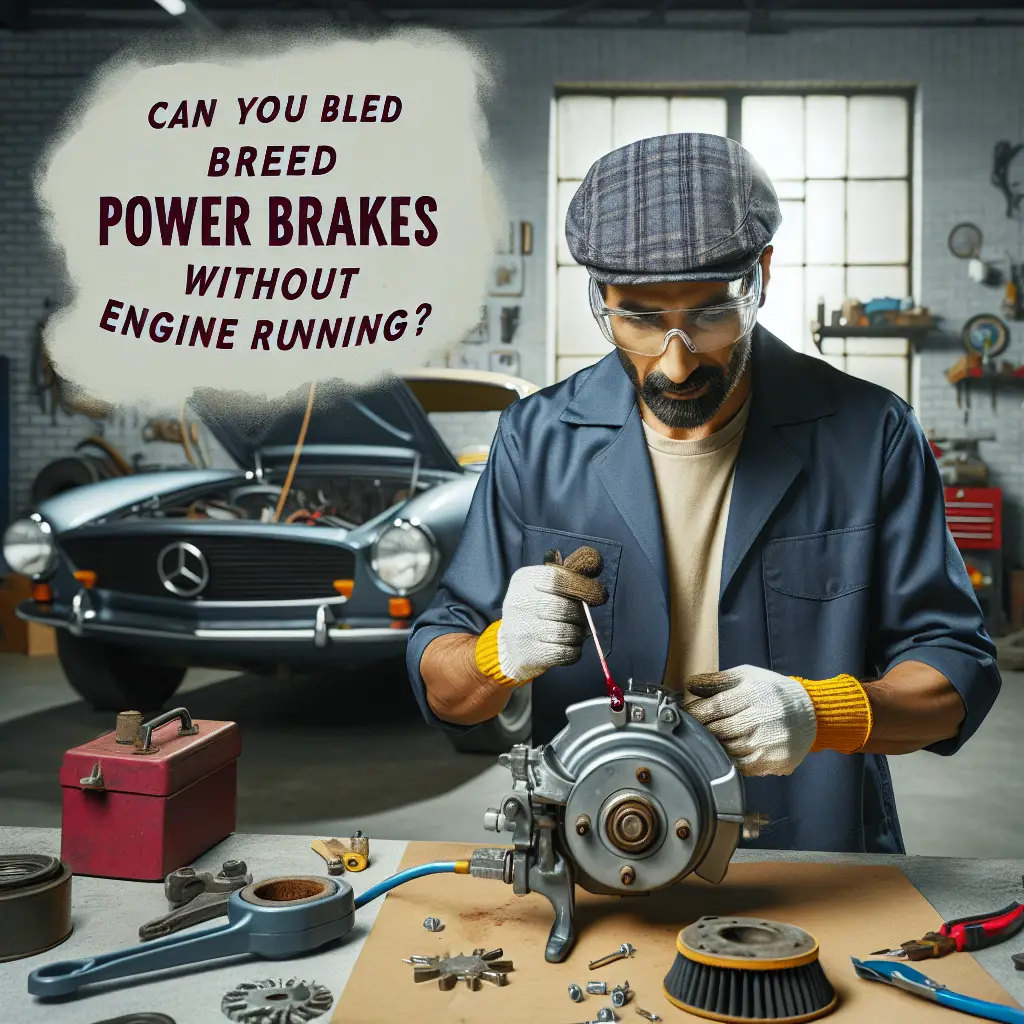Can You Bleed Power Brakes Without the Engine Running?
Bleeding power brakes is a crucial maintenance task to ensure that your vehicle’s braking system operates efficiently and safely. Many car enthusiasts and DIY mechanics are often puzzled by the question: Can you bleed power brakes without the engine running? The answer might surprise you, and in today’s blog, we’ll delve into the proper techniques to bleed your power brakes and the reasons behind them.
Understanding the Braking System
Before we tackle the main topic, having a fundamental understanding of your vehicle’s braking system is essential. The power brake system in modern vehicles typically utilizes a vacuum booster which helps to amplify the driver’s foot pressure applied to the brake pedal, making it easier to stop the vehicle (Car and Driver). The system also includes hydraulics, which move brake fluid through lines to apply pressure to each wheel’s brake. Air in the hydraulic lines can cause a spongy brake pedal feel and decrease brake efficiency, which is where bleeding comes in.
What Does Bleeding the Brakes Mean?
Bleeding the brakes refers to the process of removing air from the hydraulic brake system. Air can enter the system through leaks, brake pad changes, or low fluid levels. It’s important to purge this air because it’s compressible, unlike brake fluid, which can negatively impact brake function.
The Bleeding Process
Can you bleed power brakes with the engine off? The short answer: Yes, you can. However, let’s dive into the process to understand why and how.
1. Prepare the Vehicle
Before starting, make sure that your car is in a safe, level area. It’s recommended to use wheel chocks and ensure the parking brake is firmly set. If you need to raise the vehicle for better access, use jack stands to secure it safely.
2. Locate the Brake Fluid Reservoir
Your brake fluid reservoir is typically near the back of the engine bay. Ensure the fluid is at the appropriate level before beginning the bleeding process. You’ll want to keep an eye on this throughout the procedure to prevent air from being sucked back into the system.
3. Begin at the Wheel Farthest From the Reservoir
For most vehicles, start with the wheel farthest from the brake fluid reservoir—usually the rear passenger wheel. Attach a clear tube to the bleeder valve and submerge the other end in a container of brake fluid to prevent air from re-entering the system.
4. Pump the Brake Pedal
With the engine off, have an assistant pump the brake pedal to build up pressure and then hold it down. Open the bleeder valve slightly to allow fluid and air to escape, then close the valve before the pedal is released. It’s critical to close the valve while the pedal is still pressed to avoid drawing air into the system.
5. Repeat as Necessary
Repeat this process several times at each wheel until you see a steady stream of brake fluid without air bubbles coming out of the bleeder valve.
6. Check Fluid Levels Regularly
Throughout the bleeding process, regularly check the brake fluid level in the reservoir. Failure to maintain the proper level can allow air to enter the system, unduly prolonging the bleed process.
Why Engine Off?
The main reason to bleed brakes with the engine off is vacuum pressure. When the engine is running, the brake booster is active, creating vacuum pressure which can result in a misleading sense of all the air being expelled when, in fact, some might still be in the system. By having the engine off, you deal with a system that is ‘at rest’, making it simpler to ensure all the air is purged.
Best Practices and Tips
- Use Quality Brake Fluid: Always use the recommended type of brake fluid for your vehicle. This information can be found in the vehicle’s manual or on a reliable auto parts website like Advance Auto Parts.
-
Don’t Let the Reservoir Run Dry: This could allow air to get into the master cylinder, causing more problems.
-
Keep It Clean: Brake fluid is hygroscopic, meaning it absorbs moisture. Keep the fluid in the reservoir and the brake lines clean and dry to maintain optimal braking performance.
-
Check for Leaks: After bleeding, check each wheel for leaks to ensure the integrity of your brake system.
Conclusion
Bleeding your power brakes without the engine running is not only possible, it’s often recommended. This traditional approach helps ensure that air is thoroughly removed from the brake system so you can achieve firm, responsive braking.
For car owners willing to tackle maintenance tasks like these, it’s essential to understand your limits. If at any point you’re uncomfortable with the bleeding process, don’t hesitate to seek professional help. Safety is paramount when it comes to your vehicle’s braking system.
We hope this guide provides clarity and confidence for those looking to bleed their power brakes. Remember that routine maintenance and understanding your vehicle’s systems are key in keeping your rides safe and enjoyable. Happy wrenching, and drive safe!

